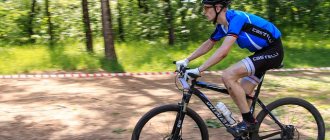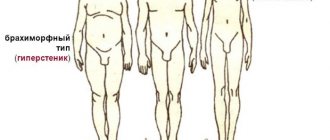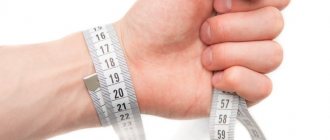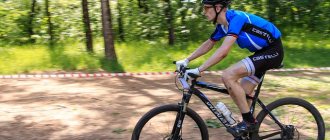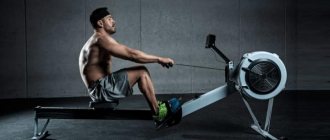Regular exercise is an effective way to stay healthy. They contribute to the formation of various physiological adaptations in the neuromuscular, cardiovascular and respiratory systems of the human body, which leads to an improvement in its general physical condition. It is these adaptations that will be discussed below.
Adaptation to physical exercise: the principle of overload
The principle of overload is responsible for progress in mastering physical exercises, as well as for adaptation to them. The muscular system can be overloaded mechanically or metabolically. These mechanisms lead to specific and distinct adaptations that enhance performance.
The extent of these adaptations depends on:
- Type of exercise.
- Exercise intensity.
- Exercise frequencies.
- Duration of exercises.
There is growing evidence that other factors may influence the scale of adaptations. These include:
- The initial level of fitness of the body.
- Genetic factors that determine the body’s response (presence/absence of response to such therapy) to the measures taken.
The nature of the exercise (eg, strength or endurance training) influences the type and extent of adaptations in the neuromuscular system. For example, if endurance training is performed (high repetition, low load), the muscular system will undergo changes aimed at intensifying aerobic metabolism and resistance to fatigue. In contrast, strength training (low reps, high load) will promote muscle adaptations such as increased myofibrillar protein synthesis. As a result, muscle growth will be observed and, as a result, muscle strength and power.
Another principle to consider is specificity. In the context of training, it is important to accept the type of exercise being performed. The principle of specificity states that only a system or body part subjected to repeated stress will adapt to chronic overload. Thus, a specific exercise induces specific adaptations that produce specific training effects.
Analysis of training intensity zones[edit | edit code]
For years, Eastern European methodologists and trainers have used training intensity zones as RM boundaries to develop and analyze strength training programs. According to most literature on strength training methodology, the best zones for producing maximum strength are zones 2 and 1 (85 percent load and above). Recently, the focus has shifted from zone 1 (load above 90 percent) to zone 3 (load between 70 and 80 percent). This change was based on the field experience of weightlifters (except the Bulgarian and Greek schools and their North American counterparts, who very often used very high-intensity loads and, not surprisingly, had a sad history of positive drug tests), as well as Russian and Italian powerlifters. Thus, analysis of the best weightlifting[6] and powerlifting programs has shown a concentration of training loads in zone 3. Again, the identification of zone 3 as the most significant zone for the development of maximum strength is a fundamental change, since almost all of the classical literature on strength training, states that the load for maximal strength training should be 85 percent of your rep max or higher.
Field experiments have shown
, What:
- Most of the neuromuscular adaptations required to increase maximal strength require loads below 90 percent of the repetition maximum; And
- The period of exposure to loads of 90 percent and above (required for specific adaptation to this intensity range) should be very short.
The table shows the neuromuscular adaptations for each intensity range. From this table we learn that:
- most gains in intramuscular coordination require loads above 80 percent;
- most of the gains in intermuscular coordination require loads of less than 80 percent; And
- we must use the full spectrum of intensity to increase neuromuscular adaptations and therefore maximal strength.
Neural adaptations according to strength training zones
| Adaptations | INTENSITY ZONES (% 1RM) | |||||
| 6 | 5 | 4 | 3 | 2 | 1 | |
| 40-60 | 60-70 | 70-80 | 80-85 | 85-90 | 90-100 | |
| Intramuscular coordination: | ||||||
| • Synchronization | **** | **** | **** | **** | **** | **** |
| • Activation | ** | *** | **** | **** | **** | **** |
| • Coding | **** | *** | *** | *** | **** | **** |
| Intermuscular coordination | **** | **** | *** | *** | ** | * |
| Disinhibition of inhibitory mechanisms | * | *** | *** | *** | **** | **** |
| Specific hypertrophy | ** | **** | **** | *** | ** | ** |
Adaptation stimulus: ****- very high; ***-high; **-average; *-short. All loading is expected to occur through the most explosive (and technically correct) concentric action that the loading allows.
Considering the training methodology, we can draw the following conclusions from this table.
- During the preparatory period with limited time to develop maximal strength—or in cases where the training of one group of athletes is likely to last only one season—the average intensity of maximal strength macrocycles is higher (80-85 percent of the repetition maximum).
This approach usually predominates in team sports.
- During the preparatory period in an individual sport with sufficient time to develop maximal strength—especially when the long-term perspective projects continued progress over the medium to long term—a strength periodization plan should focus primarily on intermuscular coordination. Consequently, the average, non-peak, intensity used in maximal strength macrocycles is lower (70-80 percent).
- However, when developing maximal strength, each periodization plan starts with a lower intensity, more time under tension during the set, and focuses on technique so that the higher intensity subsequently produces higher muscle tension.
Adaptation to Weight Training
Resistance training is a type of training aimed at increasing muscle strength, power, and muscle size through muscle contraction. This exercise regimen is based on the principle of overload, when the growth of muscle strength and volume is achieved through their training/work at loads close to maximum values. A similar training program may involve lifting and lowering weights 6-8 times for 3-4 sets with a load equal to approximately 70-80% of the maximum weight lifted at one time.
Neuroadaptation
This and other issues are discussed in detail at the “Motor Control and Learning” seminar. Find out more...
- The increased activity of the motor center after resistance training is partly responsible for the increase in physical strength.
- Optimized synchronization of neuromotor units (simultaneous action of several units).
- Reducing the load threshold at which neuromotor units are activated.
- Increased speed of action of neuromotor units.
- Decreased level of coactivation of antagonist muscles after training.
Muscular adaptations
Skeletal muscles will adapt to mechanical overloads by increasing in size. When training with weights, various signaling mechanisms are activated, which initiate the synthesis of new proteins, the growth of muscle fibers and cells, which leads to hypertrophy. However, there is little evidence that there is an increase in the number of muscle fibers (hyperplasia).
Various adaptations include:
- Increase in muscle cross-section (perpendicular cross-section).
- Changes in structure:
- Ultrasound studies show changes in pennation angle (the angle at which the fibers attach to the muscle aponeurosis). It determines the cross-sectional area of the muscles and, as a result, affects their strength.
- Hypertrophy of fiber types at the cellular level, especially type II fibers:
- Studies show a simultaneous decrease in the number of type IIx fibers and an increase in the number of type IIa fibers.
- Fast muscle fibers are naturally stronger and have a faster contraction rate, so the effect on the level of physical strength from their increase will be much greater than from the growth of slow fibers in the same proportions.
Muscle Protein Synthesis
It is common knowledge that muscles are sensitive to training loads. The muscular system is a dynamic system with proteins being synthesized and broken down. For muscle growth, it is necessary to change the balance between protein synthesis and breakdown. This can occur either by increasing the rate of synthesis, or by decreasing the rate of degradation, or a combination of both.
Important information regarding the protein production process in the human body:
- In the fasting state, muscle proteins are synthesized at a rate of ~0.04% per hour.
- Exercise and nutrition stimulate the production of myofibrillar proteins.
- Protein synthesis increases 2-5 times after resistance training.
- Intensification of protein synthesis occurs 1–2 hours after training. In a fed state, the body is able to maintain increased protein production for the next 48–72 hours.
- Accelerated protein synthesis goes along with increased protein breakdown after exercise.
- In a fed state, protein synthesis occurs more intensely than its breakdown, contributing to the production of excess protein.
- The accumulated effect from this process leads to the production of excess protein and, as a result, an increase in muscle mass after completing a cycle of exercises.
The above information clearly shows that muscle adaptation depends on the degree of nutrient supply to the body. The balance between protein synthesis and protein breakdown after exercise can be adjusted by changing the amounts of the appropriate nutrients. Both resistance training and amino acid supplementation increase protein synthesis. If these factors act together, the observed changes in the muscular system will be even more noticeable.
Eating protein after exercise allows you to:
- intensify protein synthesis;
- suppress protein breakdown.
With the suppression of protein breakdown in the fed state after exercise, insulin levels also increase, which leads to an even greater suppression of protein breakdown. Therefore, it is important to maintain proper nutritional levels to maximize the benefits of resistance training.
Myosatellites
Myosatellites are specialized muscle stem cells located in the niche between the basal lamina and the sarcolemma of the muscle fiber. They help in the growth and repair of all skeletal muscles. These cells are activated by muscle damage and/or sufficient exercise. Once these cells are activated, they proliferate, differentiate and fuse with existing muscle fibers, thereby forming new contractile proteins and repairing muscle damage. Resistance training leads to an increase in the number of myosatellites for four days after training. When resistance training is continued over an extended period of time, the number of myosatellites can increase by ~30% and, in addition, can remain elevated even if training is stopped.
Another important role of myosatellites is the transfer of their nuclei into growing muscle fiber cells, which act as post-mitotic nuclei.
Using the adaptation mechanism in the training process
In order to build the training process competently, according to scientific calculations and data, you will have to figure out how you can apply knowledge about adaptation, and indeed it itself, for the benefit of our body. The most important principles that are used in this case are called biological principles of sports training (BPST). There are many of them in the scientific world, but we will look at the most important ones.
Regularity principle
This concept is directly related to the adaptation that occurs during regular (systematic) training, as well as rest between them.
- If a person performs exercises too often, then each subsequent workout occurs before the body has time to fully recover from previous exercises. The body’s capabilities at that time had still returned to normal, so the changes were clearly pronounced. This is called negative load interaction. Moreover, each subsequent workout will only worsen the situation, and performance, endurance, and strength will eventually fade away.
- When a new sport activity is carried out just in the supercompensation phase, then the body can apply much more significant loads. This is the right option that will help gradually cause the athlete to build up their potential.
- With an excessively long rest period between workouts, classes usually fall at a time when all the recovery processes in our body have already been completed. Then all indicators return to the level they were before the load. Therefore, it is not possible to expect an increase in adaptive indicators with such regularity.
Most often in sports practice the principles of positive or negative regularity are used. But neutral interaction (long breaks) goes well with many types of therapeutic exercises, for example, joint exercises according to the method of Dr. Bubnovsky.
The principle of accessibility and individualization
In simple words, this concept reflects the possibility of performing certain exercises by different people in a group of exercisers. You should choose the level of load that even those whose physical fitness is at a fairly low level can “pull.” If you artificially increase the level, the technique of performing the exercises will suffer, which in no case should be allowed. Excessively easy tasks at the same time will not give any effect. In fact, it is worth dwelling on the algorithm: from simple to complex, from unknown to known, from main to secondary.
Individualization of classes is no less important. If you refuse to take into account the personal data of each athlete, the speed of adaptation is slowed down by the accumulated products of work decay. That is, this means that you should always make allowances for the individual performance of each athlete separately. However, in no case can this be opposed to the general principle of accessibility; it always remains a priority.
The principle of consistency and gradualism
The body’s adaptation to physical stress is based on biochemical changes in the body, we have already found this out. They appear and also develop not all together, but one by one and gradually. Aerobic energy supply appears first and lasts much longer. At the same time, the glycogen content in the muscles increases greatly, because it is used as an energy source. Significant increases in endurance, strength, speed and agility require many years of intense training.
The principle of gradualism implies a slow rather than sudden increase in physical activity. Its implementation ensures a smooth transition of the athlete from one level of physical fitness to another. The essence of all changes is to constantly increase the requirements for the student. Please note that you need to build up wisely, since for poorly trained people, each activity already causes severe stress, which negates all indicators of adaptation. Therefore, the extreme degree of gradualism plays a dominant role in the process.
Reversibility principle
Any changes in our body are not permanent; they can change under the influence of training. If you stop exercising completely or gradually reduce the load, you can eventually easily return to your original levels. All this is natural and based on biochemistry. For example, the content of creatine phosphate and glycogen as energy sources in the muscles begins to decrease, and myofibrils become much smaller.
Professional athletes call this phenomenon detraining. In fact, supercompensation is a completely reversible process, and it is temporary. This means that single training does not cause adaptive phenomena in the body. For them to occur, training must occur regularly, with the correct alternation of rest and exercise, as well as correctly selected loads.
Basic indicators of adaptation to physical activity
- Changes in the state of the central nervous system.
- Increased mobility of nervous processes.
- Shortening the latent period of motor reactions.
- Changes in the musculoskeletal system.
- Changes in respiratory function.
- Acceleration of blood circulation.
- Changes in blood composition.
Adaptations to endurance training
Endurance training aims to increase resistance to muscle fatigue during long-term training. Fatigue is defined as “the loss of the ability to develop muscle force and/or speed as a result of muscular activity under load, reversible at rest.” The performance of high-endurance activities depends on the body's ability to produce sufficient amounts of ATP through aerobic oxidation. This process requires the interaction of the neuromuscular, cardiovascular and respiratory systems. In this article, the focus is on local adaptations occurring in skeletal muscles.
Essentially, endurance training increases the oxidative capacity and metabolic efficiency of skeletal muscle. Adaptations by which this is achieved include oxygen utilization (mitochondrial adaptations), oxygen delivery (angiogenesis), and local availability of oxidizable substrate.
Mitochondrial adaptations (oxygen utilization)
Mitochondria are a kind of “power plant” of the cell. These organelles generate the majority of cellular ATP reserves through aerobic respiration. Endurance training can increase the size and number of mitochondria. The magnitude of these changes depends on the frequency and intensity of training.
As the number and size of mitochondria increases, the proportion of pyruvate produced during glycolysis that goes into the mitochondria for oxidative phosphorylation increases, with less being used to produce lactate and its byproducts. As a result, the exercise intensity that can be sustained by relying on aerobic metabolism becomes higher.
Angiogenesis (oxygen delivery)
The network of capillaries adjacent to the muscle fibers is responsible for the diffuse exchange of gases, substrates and metabolites between the circulatory system and the muscle fibers. Endurance training results in the growth of new capillaries (the process of angiogenesis) by approximately 20% after 8 weeks of training in type I and II fibers.
Substrate use
During training at submaximal loads, the main sources of energy are carbohydrates (usually muscle glycogen) and fats (local and circulating fatty acids). Endurance training leads to key adaptations in substrate use:
- At a fixed level of submaximal exercise, the contribution of fatty acid oxidation to total energy production increases simultaneously with the ability of muscles to oxidize intramuscular triglycerides as a primary energy source.
- Training leads to an increase in glycogen stores in muscle fibers in the form of granules, which leads to an increase in the number of intramuscular lipid agglomerates in contact with mitochondria.
- Endurance athletes rely on increased fatty acid oxidation because it does not affect muscle glycogen stores (which are needed more during high-intensity exercise).
Neuroadaptation
During endurance training, the following adaptations develop in the nervous system:
- Reduced reaction time of motor units to the received load.
- With the continuous muscle contractions that occur during endurance training, the impulse conduction velocity of the neuromotor units decreases more slowly.
- Reducing the load threshold at which neuromotor units are activated.
Model
The proposed model consists of three parts:
- preconditions
- possibilities
- consolidation
Periodization/scheduling, recovery, and supercompensation can also be used as three descriptive terms. Premise Model Aspect
reflect the type, quantity, and availability of resources a person has for coping with stress from training, competition, and life.
Resources arise from physiological, psychological and social factors. Identifying and implementing predisposing factors may require considerable time and forethought. Capacity
refers to the knowledge, motivation, and conditions to improve recovery from exercise-induced fatigue and performance impairment by repairing damaged neuromuscular structures and functions (260).
Fatigue in capabilities
is predominantly peripheral (215).
It is within the limits of possibility that most short-term recovery mechanisms are found. The third part of the model consists of consolidating
the adaptation from the prolonged action of repair mechanisms and the transition from a local tissue response to a more systemic organ response.
Consolidation is
an indirect mechanism of VA and is needed to improve adaptation by strengthening tissue structures, metabolism, increasing the availability of substrates and psychological stability. Many short-term mechanisms are capable of enhancing adaptation through repetition and accumulation, but require significant resources that will increase the duration of their action. Evidence of improved adaptation includes increased performance beyond previously available levels, pain relief, increased desire to exercise, and overall readiness. The proposed model is shown in the table.
Comparison of neuromuscular adaptations during strength and endurance training
| Adaptation | Power training | Endurance training |
| Muscle fiber size | increase | without changes |
| Number of muscle fibers | without changes | without changes |
| Travel speed | increase | without changes |
| Force | increase | without changes |
| Aerobic performance | without changes | increase |
| Anaerobic Performance | increase | without changes |
| Number of capillaries | no change or decrease | increase |
| Number of mitochondria | decrease | increase |
| Conversion of type II fibers to subtypes | almost completely into type IIa | majority in type IIa (with small intervals) |
Sources[edit | edit code]
- Lamb, D. R. 1984. Physiology of Exercise: Responses and Adaptations, 2nd ed. New York: MacMillan Publishing Company.
- Broughton, A. 2001. Neural mechanisms are the most important determinants of strength adaptations. Proposition for debate. School of Physiotherapy, Curtin University.
- Ploutz, L., et al. 1994. Effect of resistance training on muscle use during exercise, Journal of Applied Physiology, 76: 1675-1681.
- Moritani, X, and deVries, H. A. 1979. Neural factors versus hypertrophy in the time course of muscle strength gain. American Journal of Physical Medicine 58(3): 115-30.
- Rasmussen, R. B., and Phillips, S. M. 2003. Contractile and nutritional regulation of human muscle growth. Exercise and Sport Sciences Reviews 31(3): 127-31.
- Roman Suarez, I. 1986. Levantamiento depesos—Periodo competitivo. La Habana, Cuba: Editorial Cientifico Tecnico.
- Crameri, R. M., et al. 2004. Enhanced procollagen processing in skeletal muscle after a single bout of eccentric loading in humans. Matrix Biology 23(4):259-64.
- Miller, B. F., et al. 2005. Coordinated collagen and muscle protein synthesis in human patella tendon and quadriceps muscle after exercise. Journal of Physiology 567(Pt 3): 1021-33.
- Babraj, J. A., et al. 2005. Collagen synthesis in human musculoskeletal tissues and skin. American Journal of Physiology—Endocrinology and Metabolism 289 (5): E864-69.
- Doessing S. and Kjaer. 2005. Growth hormone and connective tissue in exercise. Scandinavian Journal of Medicine and Science in Sports, 15(4): 202-210.
- Kjaer, M., et al. 2005. Metabolic activity and collagen physical turnover in human tendon in response to activity. Journal of Musculoskeletal and Neuronal Interactions 5(1): 41-52.
- Kjaer, M., et al. 2006. Extracellular matrix adaptation of tendon and skeletal muscle to exercise. Journal of Anatomy 208(4): 445-50.
- Tesch, P. A., Thorsson, A., and Kaiser, P. 1984. Muscle capillary supply and fiber type characteristics in weight and power lifters. Journal of Applied Physiology 56:35–38.
- Tesch, P. A., and Larsson, L. 1982. Muscle hypertrophy in bodybuilders. European Journal of Applied Physiology and Occupational Physiology 49 (3): 301-6.
- Howard, JD, Ritchie, MR, Gater, DA, Gater, DR, and Enoka, RM 1985. Determining factors of strength: Physiological foundations. National Strength and Conditioning Journal 7 (6): 16-21.
- Schmidtbleicher, D. 1984. Sportliches krafttraining. Berlin: Jung, Haltong, und Bewegung bei Menchen.
- Behm, D., and Sale, DG 1993. Intended rather than actual movement velocity determines velocity-specific training response. Journal of Applied Physiology 74:359–68.

